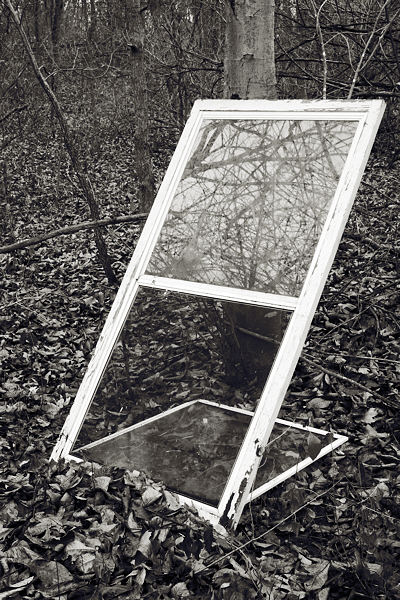Posted by Steve Durbin on February 14th, 2008
When it comes to created work, most artists have little choice but to move on once they’ve produced a piece (admittedly, it can sometimes be difficult to identify or reach an endpoint). Photographers are blessed or cursed with a real choice. Probably most, having once achieved a satisfactory rendition of an image, are willing to leave it there. From that point, with digital technology, endless identical copies can be made (I’m ignoring printing technicalities, a different subject altogether). In the non-digital world of printing from negatives, a new print request may entail a repeat visit to the darkroom, but careful photographers certainly have notes on paper choice, development time, and any dodging or burning they might have settled on. Reproducibility is one of photography’s greatest strengths, despite the headaches and posturing over pricing that it may induce.

more… »
Posted by Birgit Zipser on February 8th, 2008
Personal psychogeography (see previous post) has provided food for thoughts for many days to come. Listening to Will Self’s lecture on this subject, I enjoyed the image of a busy novelist who, intellectually, made the decision to allow ‘drift’ into his own life. He explained that he used to live in ‘microenvironments’ consisting of the city of London and, on his book tours, the hotels that he was transported into by airplanes and taxis. To appreciate more of his surroundings, he now walks from airports to hotels or takes buses.
I, too, find it more enjoyable to take a bus from La Guardia airport through the streets of Queens to Manhattan. Part of my enjoyment is watching the ethnicity of people boarding or leaving the bus in the different neighborhoods. Psychogeography accompanied by anthropology, an interest in the lives of people?
First of all, a common thread in my personal psychogeography has been Water. Having grown up in a small town at the North Sea, I often jogged with my dog along a bay in the ocean.
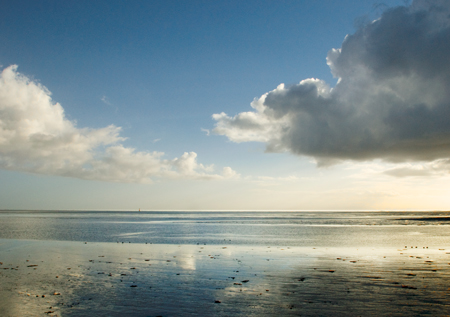
more… »
Posted by Steve Durbin on February 5th, 2008
Psychogeography: the word conjures for me. I came across it a scant few weeks ago, and immediately it brought some coherence to many thoughts that have clattered around my mind for a while. It was like finding the framing for a photograph that brings the picture elements into good relationship.
more… »
Posted by Steve Durbin on January 29th, 2008
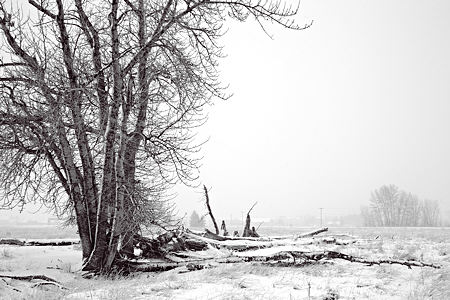
The cottonwood project I’ve embarked on is turning out to have some interesting differences from work I’ve done in the past. Which is a great thing in a project, something that I aim for but can’t predict. This one has has helped me not only to see cottonwoods (and other trees) in a new way, but also to be more aware of genre influences in picturing them. By genre I mean more or less familiar modes or types of photographing, such as landscape or portrait or documentary. Genres are similar in related arts, but painting, for example, has a different history of pictures made, and therefore we view a painted portrait differently than a photographic one.
more… »
Posted by Steve Durbin on January 14th, 2008
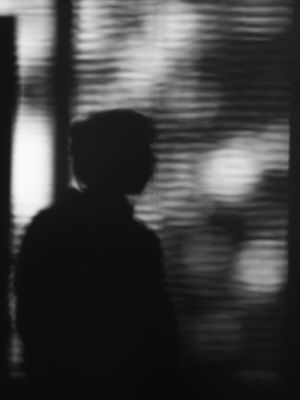
Photographs are tied to place, and my normal practice is to revisit a place repeatedly, attempting to know and see it better. Perhaps less obviously, photographs are also tied to time. Some of the most striking are tied to a moment that can never return. But that’s seldom the case for me: usually the relevant time is seasonal, and will probably recur next year for perhaps a week or, if I’m lucky, a month. The photograph here, though, had unusually stringent constraints: it could only be made within a few minutes of sunrise on a couple days of the year, when the sun is behind a certain tree about twenty-five yards from my office window.
more… »
Posted by Birgit Zipser on January 11th, 2008
Fractal patterns of mudflats at low tide,
more… »
Posted by Steve Durbin on January 8th, 2008
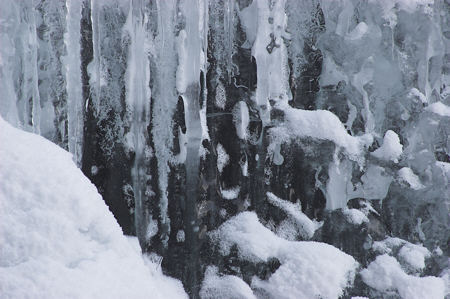
Posts from Sunil and from Jay have described their use of Photoshop manipulations. So I thought I’d show a bit of what happens — or could happen — to one of my images when I process it. To keep it simple, I’ll discuss a single photograph taken last weekend, a close view of a portion of frozen Lost Creek Falls in Yellowstone. Above is the “straight” version, i.e. how it looks when the simplest possible treatment with “no” adjustments is applied. The lighting from the partly blue sky gives it the bluish cast. My usual conversion to black and white, with contrast and brightness adjustment (“curves”) yields the result below. By “usual” I mean usual approach; the actual adjustments are different for each image.
more… »


